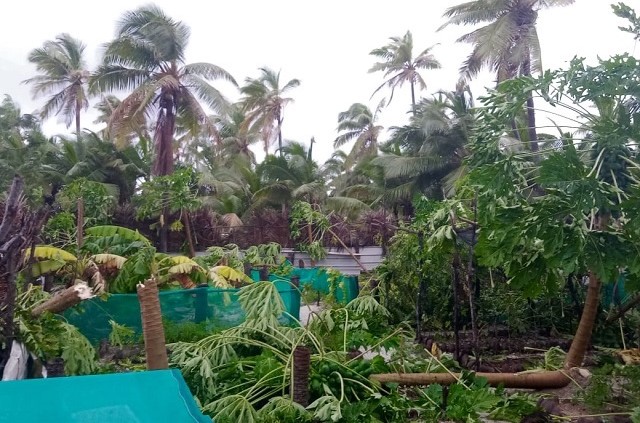Increasing global warming from currently one to two degrees Celsius by mid-century might lead to about 25 percent more people put at risk by tropical cyclones, a new study finds.

Already today, hurricanes and typhoons are said to be among the most destructive natural disasters worldwide and potentially threaten about 150 million people each year.
Adding to climate change, population growth further drives tropical cyclone exposure, especially in coastal areas of East African countries and the United States. Considering the joint impact of climate change and population growth provides an untapped potential to protect a changing world population.
“If we add population growth to two-degree Celsius global warming, in 2050 we could even see an increase of ca. 40 percent more people exposed to cyclones,” says Tobias Geiger, researcher at the Potsdam Institute for Climate Impact Research (PIK) and the Deutscher Wetterdienst (DWD), lead author of the new study published in Nature Climate Change.
“As the global population is projected to peak around mid-century, more people will face more intense cyclones, due to climate change – putting that higher population at greater risk,” adds Geiger.
The global ambition is to limit warming to well below two degrees, yet compared to unmitigated climate change even reaching two degree Celsius of global warming 50 years later could lead to a quite different outcome, as an interdisciplinary team of scientists from Germany, Switzerland and the US found in a computer-based analysis:
Until 2100, population models project an unforced, regular declining population in cyclone prone areas on a global scale. This would partially compensate for the additional exposure caused by warming as Geiger underlines: “If we rapidly reduce greenhouse gas emissions and reach two degrees Celsius of global warming only in 2100, this would limit the increase of people in danger of cyclones to 20 percent. This finding is key as it shows that reducing global warming potentially postpones severe tropical cyclone impacts to the late second half of the century, when there would be far fewer people at risk.”
Timing is key when assessing exposure to cyclones
In the study, the scientists analysed the joint impacts of demographic development and climate change on people exposed to tropical cyclones – and found that timing of when certain warming levels are reached becomes crucial.
The results are even more obvious on the country level, explains Johannes Gütschow: “Our model shows, with unprecedented detail, that in 2050 all countries at high risk of tropical cyclones are projected to see a rise in exposure. Due to the projected population growth, we found exposure changes of nearly 300 percent in some East African countries, up to 100 percent in the United States and also a strong increase for the Arabian Peninsula. For the US, this will most likely result in more cyclone damages, while other strongly affected world regions might also face more poverty and forced migration.”
Under less rapid warming scenarios this picture changes: Delaying two degrees of warming to 2080 or 2100 – in line with a projected population decline – would result in a reduction of exposed population in the Caribbean and in East Asia, in particular in Japan, China, and the Korean peninsula compared to a scenario where a two-degree global warming would occur already in 2050.
Gütschow adds: “Basically, our computer model can calculate the impact of any given warming scenario, on a global and country scale, and its implications for the number of people at risk by tropical cyclones. Our findings most likely also hold true for a variety of other climate extremes whose occurrence only depends on absolute warming and not on the timing.”
Informing the UN climate summit COP26 on re-considering national contributions
This can also inform decisions at the 2021 UN world climate summit, COP26, which will be an occasion to re-consider the insufficient Nationally Determined Contributions (NDCs) under the Paris Agreement:
“The current NDCs scenario would lead to about two degrees of warming around mid-century and a continuous rise of warming thereafter,” says Katja Frieler, co-lead of PIK’s Research Department on Transformation Pathways. “In line with the NDCs, the number of people at risk of cyclones would keep rising throughout the century, for instance in the hurricane-prone regions of the US.”
Frieler underlines: “Emission reductions that would limit global warming to 1.5 degree Celsius could cumulatively protect over 1.8 billion people from exposure to tropical cyclones until the end of this century compared to the warming under currently proposed emission reductions. It is thus high time to rapidly reduce greenhouse gas emissions to keep as many people safe as possible.”
